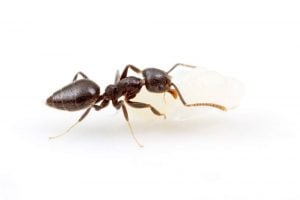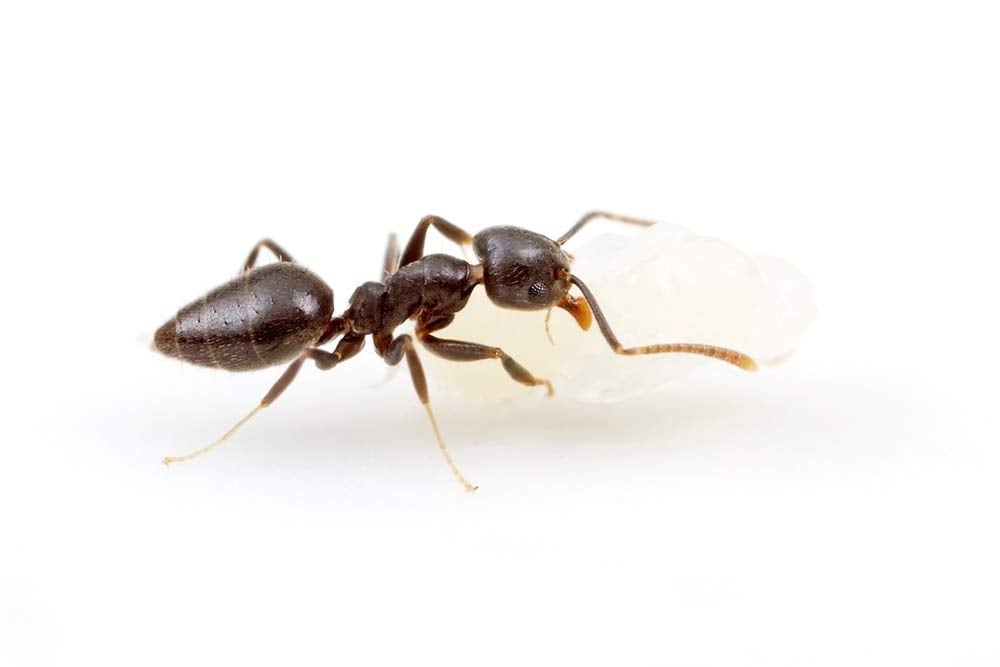
The Weird Colony Structure of the White-Footed Ant
An overview of the unusual characteristics of the white-footed ant nest and colony, with tips for gaining control.

There are a number of species in the Technomyrmex genus, which all could described as white footed house ants. They are all very similar in appearance and only experts will be able to tell them apart. In New Zealand, the main species is Technomyrmex jocosus.
Invasive (from Australia)
White footed house ants are found across most of New Zealand, but predominantly on the north island as they prefer temperate to sub-tropical climates. In the North Island they exist both outdoors and indoors, but as you move further south, particularly into the South Island, there are more of an indoor nesting species.
White footed house ants do not nest in the soil – they nest at or above ground level. In buildings they will commonly nest in wall cavities and roof voids.
White footed house ants can form massive colonies of up to several million ants. In these large colonies around half the colony is made of intercastes – secondary female reproductive. There is a nuptial flight each year and after mating on the wing, successful new queens will start a new colony. Over time, as the colony grows the intercastes eventually replace the original queen. These intercastes can also create new nests by budding (leaving the nest will a small number of workers and brood).
Colour: Dark brown to black with white or pale ends to the legs
Size: 2.5 – 3.0 mm
Nodes on petiole: No obvious node
Although omnivorous, white footed house ants have a strong preference for sugar and will often be seen trailing on the outside of houses into trees to collect honey dew from sap feeding insects.
White footed house ants commonly access buildings through adjacent vegetation. Clearing vegetation from around the perimeter of the building and trimming back any branches overhanging or touching the roof will help.
Can sometimes be confused with the black house ant and Argentine ant.
Our main ant information page has other species of ant.
White footed house ants are one of most difficult of ants to control and it is generally necessary to use the services of a professional pest manager.
Not only can the nests contain huge number of ants, often with several nests as part of the same colony, but the presence of intercastes and lack of trophallaxis means that baits can have limited impact on the population.
Tackling the areas of activity with non-repellent sprays (which are only available to pest professionals) is often a good starting point as it can dramatically impact population numbers. If the nest cannot be located spraying trails both on buildings and in vegetation will be a good start.
Bait can also be utilised, with sugar based baits proving very attractive. However, with limited trophallaxis, plentiful bait is required to ensure all the workers and intercastes can access bait directly. This lack of trophallaxis may be the reason for the variable performance of baits reported by some pest managers.
Slower acting insecticides, especially those based on IGRs may find their way into the trophic eggs, to ensure larvae and non-foraging workers can be targeted.
White-footed ants are amongst the more difficult pest ants to control.

An overview of the unusual characteristics of the white-footed ant nest and colony, with tips for gaining control.